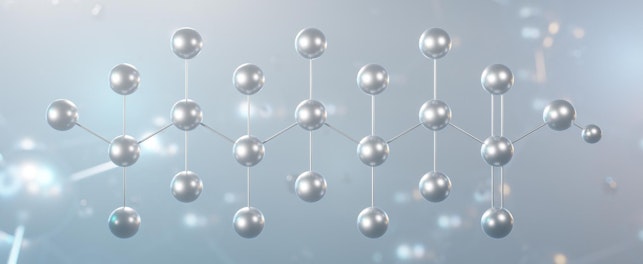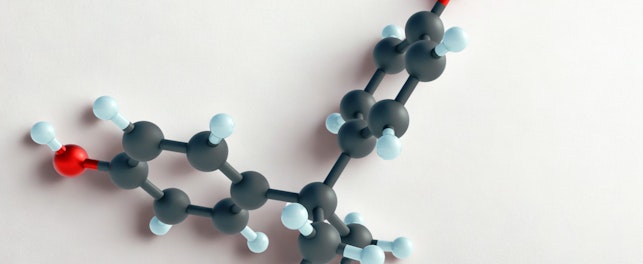The EU has published a draft revision to replace entry 68 to Annex XVII of REACH. If approved, the new restrictions may become effective in the second half of 2022.
On August 3, 2020 the World Trade Organization (WTO) circulated a draft regulation from the European Union (EU) to announce its intention to regulate perfluorocarboxylic acids containing 9 to 14 carbon atoms in the chain (C9-C14 PFCAs), their salts and related substances – a family of substitutes for perfluorooctanoic acid (PFOA), its salts and related substances. The draft regulation and Annex, attached to WTO document number 20-5375, places certain restrictions/prohibitions on these substances with multiple derogations.
According to the definitions, C9-C14 PFCAs and their related substances have the following meaning:
- Linear and branched C9-C14 PFCAs having the formula CnF2n+1-C(O)OH, where n = 8, 9, 10, 11, 12 or 13:
- C9-PFCA (perfluorononan-1-oic acid, PFNA, CAS 375-95-1)
- C10-PFCA (nonadecafluorodecanoic acid, PFDA, CAS 335-76-2)
- C11-PFCA (henicosafluoroundecanoic acid, PFUnDA, CAS 2058-94-8)
- C12-PFCA (tricosafluorododecanoic acid, FPDoDA, CAS 307-55-1)
- C13-PFAC (pentacosafluorotridecanoic acid (PFTrDA, CAS 72629-94-8)
- C14-PFCA (heptacosalfluorotetradecanoic acid, PFTDA, CAS 376-06-7)
- C9-C14 PFCA-related substances having a perfluoro group (CnF2n+1- where n = 8, 9, 10, 11, 12 or 13) directly attached to another carbon atom, including any combinations thereof
- C9-C14 PFCA-related substances having a group (CnF2n+1- where n = 9, 10, 11, 12, 13 or 14 as one of the structural elements) not directly attached to another carbon atom, including any combinations thereof
The following substances are excluded from the meaning:
- CnF2n+1-X, where X is F, Cl or Br and n = 9, 10, 11, 12, 13 or 14, including any combinations thereof
- CnF2n+1-C(O)OX’ where X’ is any group and n > 13, including salts
The six C9-C14 PFCAs, including the ammonium and sodium salts of PFNA and PFDA, are also in the Candidate List of substances of very high concern (SVHCs).
The draft regulation would replace entry 68 to Annex XVII of REACH on PFOA, its salts and PFOA-related substances – the European Commission is planning to delete entry 68 to Annex XVII of REACH as these substances are now regulated under the POP recast Regulation.
Per the WTO document, the changes would be:
- Adopted in Q1 of 2021
- Entered into force 20 days from its publication in the Official Journal of the EU (OJEU)
- Effective 18 months after the date of entry into force, potentially second half of 2022
Highlights of the draft regulation are summarized in Table 1.
| WTO Document Number 20-5375, August 3, 2020 Entry 68 to Annex XVII of REACH | |||
|---|---|---|---|
| Substance | Scope* | Requirement | Effective Date |
|
| Prohibited (substances on their own) < 25 ppb (sum of C9-C14 PFCAs and their salts) < 260 ppb (sum of C9-C14 PFCA-related substances) | Potentially second half of 2022 |
| *Certain derogations apply | |||
Table 1
SGS is committed to providing information about development in regulations for consumer products as complimentary services. Through a global network of laboratories, SGS provides a wide range of services including physical/mechanical testing, analytical testing and consultancy work for technical and non-technical parameters applicable to a comprehensive range of consumer products. Please do not hesitate to contact us for further information.
For enquiries, please contact:
Hingwo Tsang
Global Information and Innovation Manager
t: (+852) 2774 7420
© SGS Group Management SA - 2020 - All rights reserved - SGS is a registered trademark of SGS Group Management SA. This is a publication of SGS, except for 3rd parties’ contents submitted or licensed for use by SGS. SGS neither endorses nor disapproves said 3rd parties contents. This publication is intended to provide technical information and shall not be considered an exhaustive treatment of any subject treated. It is strictly educational and does not replace any legal requirements or applicable regulations. It is not intended to constitute consulting or professional advice. The information contained herein is provided “as is” and SGS does not warrant that it will be error-free or will meet any particular criteria of performance or quality. Do not quote or refer any information herein without SGS’s prior written consent.



